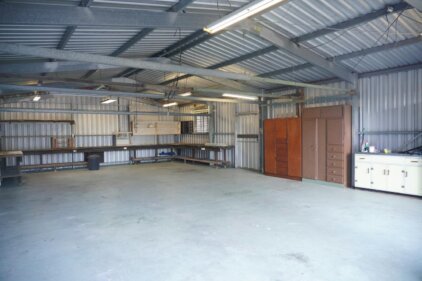Cultural factors shaping UK’s design trends
One of the most significant factors influencing interior design in the UK is culture. Each region has its own rich cultural heritage, which plays a pivotal role in shaping design trends. For instance, in Scotland, the traditional tartan patterns and rugged landscapes have a strong influence on the interior design choices of the locals. The use of natural materials such as wood and stone, along with a palette of earthy tones, creates a warm and inviting atmosphere.
In contrast, the cultural influences in London are more cosmopolitan and eclectic. The city’s vibrant and diverse population has led to a fusion of styles, with a mix of modern and traditional elements. Londoners embrace bold colours, abstract art, and avant-garde furniture, creating an atmosphere that is both sophisticated and cutting-edge.
Climate factors influencing interior design in the UK
The UK’s climate also plays a significant role in shaping interior design trends. The ever-changing weather conditions have a direct impact on the way people design and decorate their homes. In regions with colder climates, such as Scotland and the North of England, there is a focus on creating warm and cosy spaces. This is achieved through the use of thick curtains, plush rugs, and comfortable seating arrangements.
On the other hand, in regions with milder climates, such as the South of England, the design trends are more influenced by the desire for light and airy spaces. Large windows, open floor plans, and a minimalist approach to furniture and decor are common in these areas. The goal is to bring the outdoors in and create a seamless transition between the interior and exterior spaces.
Lifestyle factors impacting UK’s diverse design trends
The lifestyle of the residents in a particular region also has a significant impact on interior design trends. For example, in rural areas such as the Cotswolds, where a slower pace of life is embraced, there is a preference for traditional and rustic design elements. Natural materials, such as exposed beams and stone walls, are commonly used to create a cosy and charming atmosphere.
In contrast, urban areas like Manchester and Birmingham have a more fast-paced and dynamic lifestyle, which is reflected in their design choices. These cities embrace modern and industrial design styles, with a focus on clean lines, sleek surfaces, and minimalist decor. The emphasis is on functionality and efficiency, catering to the needs of busy city dwellers.
Regional design styles in the UK – a closer look
Now that we have explored the cultural, climate, and lifestyle factors that shape the UK’s diverse design trends, let’s take a closer look at some of the regional design styles that have emerged.
In Scotland, the traditional design style is heavily influenced by the country’s rich history and natural landscapes. Tartan patterns, kilts, and thistle motifs are commonly seen in upholstery, curtains, and accessories. The use of natural materials such as wood and stone adds a sense of warmth and authenticity to the interiors.
In London, the design style is a melting pot of influences from around the world. The city’s cosmopolitan nature is reflected in its eclectic and avant-garde interiors. Vibrant colours, bold patterns, and contemporary furniture are key elements of London’s design aesthetic. The city’s rich cultural scene and cutting-edge fashion industry also play a significant role in shaping the design trends.
Incorporating regional influences into your interior design
If you are looking to incorporate regional influences into your interior design, there are several approaches you can take. One option is to embrace the specific design style of the region you are in. For example, if you are in Scotland, consider incorporating tartan patterns, natural materials, and earthy tones into your design scheme.
Another approach is to take inspiration from different regions and create a fusion of styles. This allows you to embrace the diversity of the UK’s design trends and create a unique and personalised space. For instance, you could combine the sleek lines of modern London design with the rustic charm of a countryside cottage.
Case studies: Examples of regional design trends in the UK
To further illustrate the influence of regional factors on interior design in the UK, let’s explore some case studies of specific design trends in different regions.
Case Study 1: The Cotswolds
The Cotswolds, known for its picturesque villages and rolling countryside, has a distinct design style that celebrates its rural heritage. In this region, you will find homes with exposed beams, stone fireplaces, and traditional furnishings. The colour palette is often inspired by nature, with soft greens, warm yellows, and earthy browns dominating the interiors.
Case Study 2: Manchester
Manchester, a vibrant and bustling city, is known for its industrial past. The design style in this region is influenced by the city’s history, with a focus on exposed brick walls, metal accents, and reclaimed materials. The interiors are often characterised by an urban loft aesthetic, with open floor plans, high ceilings, and statement lighting.
How to research and stay updated on regional design influences
To stay updated on regional design influences in the UK, it is important to conduct thorough research and keep an eye on the latest trends. Here are some tips to help you in your quest for inspiration:
- Follow design blogs and websites that focus on regional design trends in the UK. These platforms often feature articles, case studies, and interviews with local designers, providing valuable insights into the latest trends.
- Attend design events and exhibitions in different regions. This will give you the opportunity to see firsthand the work of local designers and gain a deeper understanding of the design scene in that particular region.
- Engage with the local community and network with fellow designers. By connecting with professionals in the industry, you can exchange ideas, share experiences, and stay updated on the latest trends and developments.
The role of technology in regional interior design
In today’s digital age, technology plays a crucial role in interior design, including regional influences. With the advent of social media platforms and online design tools, it has become easier than ever to explore and incorporate different design styles into your projects.
Platforms like Pinterest and Instagram allow you to discover new trends and gather inspiration from designers all over the world. You can create mood boards, save images, and even connect with other design enthusiasts to exchange ideas and tips.
Conclusion: Embracing diversity in UK’s interior design trends
In conclusion, the regional influences on interior design in the UK are vast and diverse. Cultural, climate, and lifestyle factors shape the design trends in each region, resulting in a rich tapestry of styles and aesthetics.
As an interior designer, it is important to embrace this diversity and incorporate regional influences into your projects. By doing so, you can create spaces that are not only beautiful and functional but also reflect the unique characteristics of the people and places they are designed for.
So, whether you are inspired by the rugged landscapes of Scotland, the cosmopolitan vibe of London, or the charming cottages of the Cotswolds, remember to celebrate the regional influences that make UK’s interior design scene so vibrant and fascinating.





